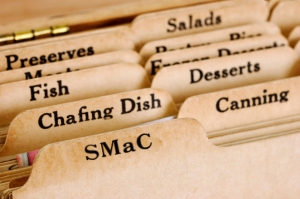In the fast-changing environment in which our agency works, there are some things that will stay the same and will serve to anchor the organization in chaotic times. These constitute our unique “SMaC Recipe”. As identified in the book Great by Choice, by Jim Collins,“SMaC stands for specific, methodical and consistent. The more uncertain, fast-changing, and unforgiving your environment, the more SMaC you need to be.”
The SMaC recipe is different from goals or values. The list includes operating practices that provide guidance regarding what to do and not to do. Regardless of how our strategic goals may change over time, or how uncontrollable industry or economic variables affect our work, our SMaCs should remain largely unchanged.
Developing a SMaC recipe was initially a challenging concept for our leadership team to wrap their brain around. But after we waded through a lot of complexity, we eventually came to realize that these were simply the ground rules by which we function. I’m not sure our SMaCs exactly follow what Collins had in mind when he identified the concept through his research; but whether they are nor not, grappling with the list, and then using it along with our mission/vision/values and our strategic framework to guide our decision making, has been helpful for our team.
And the real litmus test . . . when I shared the final list with staff and asked if it sounded like us (SMaCs are real time, not aspirational), I have consistently heard a resounding “yes!” At Chaddock, we have identified the ten points below as our SMaC recipe:
- The client is the family system.
- Chaddock models our faith-based culture by living “the golden rule” in all our interactions.
- Recognizing employees and their contributions is important.
- Every new program opportunity is considered through our trauma and attachment lens.
- We maintain a diversified funding stream.
- We seek and integrate innovative ideas, from inside and outside the human services field, to improve our effectiveness.
- We use measurable data to inform our treatment, track the outcomes of our efforts and to adapt and strengthen our programs and services.
- We respectfully ask and address the hard questions, and make decisions in a transparent manner.
- A culture of excellence is fostered with the infusion of new knowledge through training and reflection, and communication of and support for clear goals and expectations.
- We initiate and maintain strategic partnerships with other recognized leaders to maximize knowledge generation in the field of trauma and attachment.
Maybe that list doesn’t seem that earth-shattering to you, but I have found that often times the most powerful things seem pretty basic once you distill them down. One other thing . . . this list won’t work for you. The value of a SMaC Recipe lies in the fact that it highlights those things that are unique to your organization. In the same way that your strategic goals don’t (I hope!) look just like another organization’s, your “way of doing business” should be identifiable as your own as well.
SMaCing your organization isn’t easy, but it’s worth the effort.

